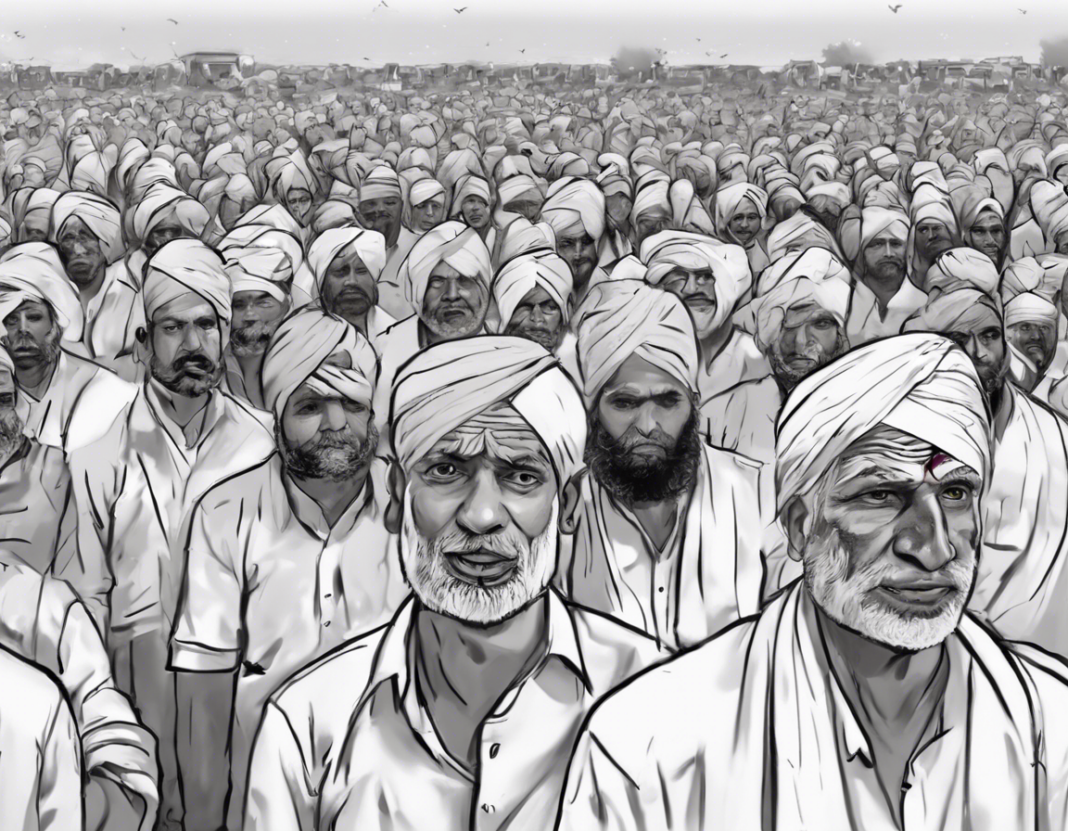India’s northeastern region is a land of diverse cultures, rich traditions, and breathtaking landscapes. Among the states in this region, Assam stands out as a unique blend of history, nature, and tradition. One of the most significant movements that have emerged from Assam is the Amrit Brikha Andolan, which translates to the “Tree of Immortality Movement”. This movement symbolizes the indigenous people’s fight to preserve their heritage, culture, and environment against various threats.
The Origins of the Amrit Brikha Andolan
The Amrit Brikha Andolan traces its roots back to the mid-20th century when the people of Assam began to witness rapid changes in their environment due to industrialization, urbanization, and deforestation. The traditional way of life, closely intertwined with nature, was under threat, leading to a growing sense of urgency among the locals.
Objectives of the Movement
The primary objective of the Amrit Brikha Andolan is to protect and preserve the ancient forests of Assam, which are not only crucial for the region’s biodiversity but also hold immense cultural and spiritual significance for the indigenous communities. These forests, often referred to as “Van Panchayats”, are considered sacred groves that are home to a wide variety of flora and fauna, some of which are unique to the region.
Key Players in the Movement
The Amrit Brikha Andolan is a grassroots movement led by local communities, environmental activists, and tribal leaders who are deeply connected to the land. These individuals have been at the forefront of the struggle to raise awareness about the importance of preserving the forests and to mobilize support for sustainable conservation efforts.
Challenges Faced by the Movement
Despite its noble objectives, the Amrit Brikha Andolan faces several challenges, including political apathy, lack of resources, and external pressures from industries and commercial interests. The struggle to balance economic development with environmental conservation is a delicate one, and the movement often finds itself at odds with powerful forces that prioritize short-term gains over long-term sustainability.
Achievements and Impact
Over the years, the Amrit Brikha Andolan has made significant strides in raising awareness about environmental issues in Assam and mobilizing support for conservation efforts. The movement has successfully blocked several development projects that threatened the region’s forests, such as mining, logging, and dam construction. By fostering a sense of community ownership and stewardship, the Andolan has been able to create sustainable models of forest management that benefit both the environment and the local population.
The Role of Indigenous Knowledge
One of the key strengths of the Amrit Brikha Andolan lies in its deep respect for indigenous knowledge. The traditional wisdom of the local communities, passed down through generations, forms the backbone of the movement’s conservation strategies. By incorporating indigenous practices such as agroforestry, seed saving, and water harvesting, the Andolan has been able to create a harmonious relationship between people and nature.
Future Directions and Sustainability
Looking ahead, the Amrit Brikha Andolan faces the challenge of ensuring long-term sustainability in the face of rapid environmental changes and increasing urbanization. The movement is working towards building strategic partnerships with government agencies, conservation organizations, and educational institutions to strengthen its conservation efforts and expand its impact.
FAQs:
Q: What are the main threats to the forests of Assam that the Amrit Brikha Andolan is fighting against?
A: The main threats include industrialization, urbanization, deforestation, mining, and dam construction.
Q: How can individuals support the Amrit Brikha Andolan’s mission?
A: Individuals can support the movement by raising awareness about environmental issues, volunteering for conservation efforts, and donating to local organizations working towards forest preservation.
Q: What is the significance of the term “Van Panchayats” in the context of the Amrit Brikha Andolan?
A: “Van Panchayats” refer to the sacred groves that are at the center of the Andolan’s conservation efforts. These forests hold cultural, spiritual, and ecological importance for the local communities.
Q: How does the Amrit Brikha Andolan incorporate indigenous knowledge into its conservation strategies?
A: The Andolan respects and integrates traditional practices such as agroforestry, seed saving, and water harvesting to ensure sustainable forest management.
Q: What are some of the key achievements of the Amrit Brikha Andolan so far?
A: The Andolan has successfully blocked several development projects that threatened the forests, raised awareness about environmental issues, and created sustainable models of forest management.
In conclusion, the Amrit Brikha Andolan serves as a beacon of hope for environmental conservation efforts in Assam and beyond. By honoring indigenous knowledge, fostering community participation, and standing firm against threats to the region’s forests, the movement embodies the spirit of resilience and determination that is necessary to protect our planet’s natural heritage for future generations.
